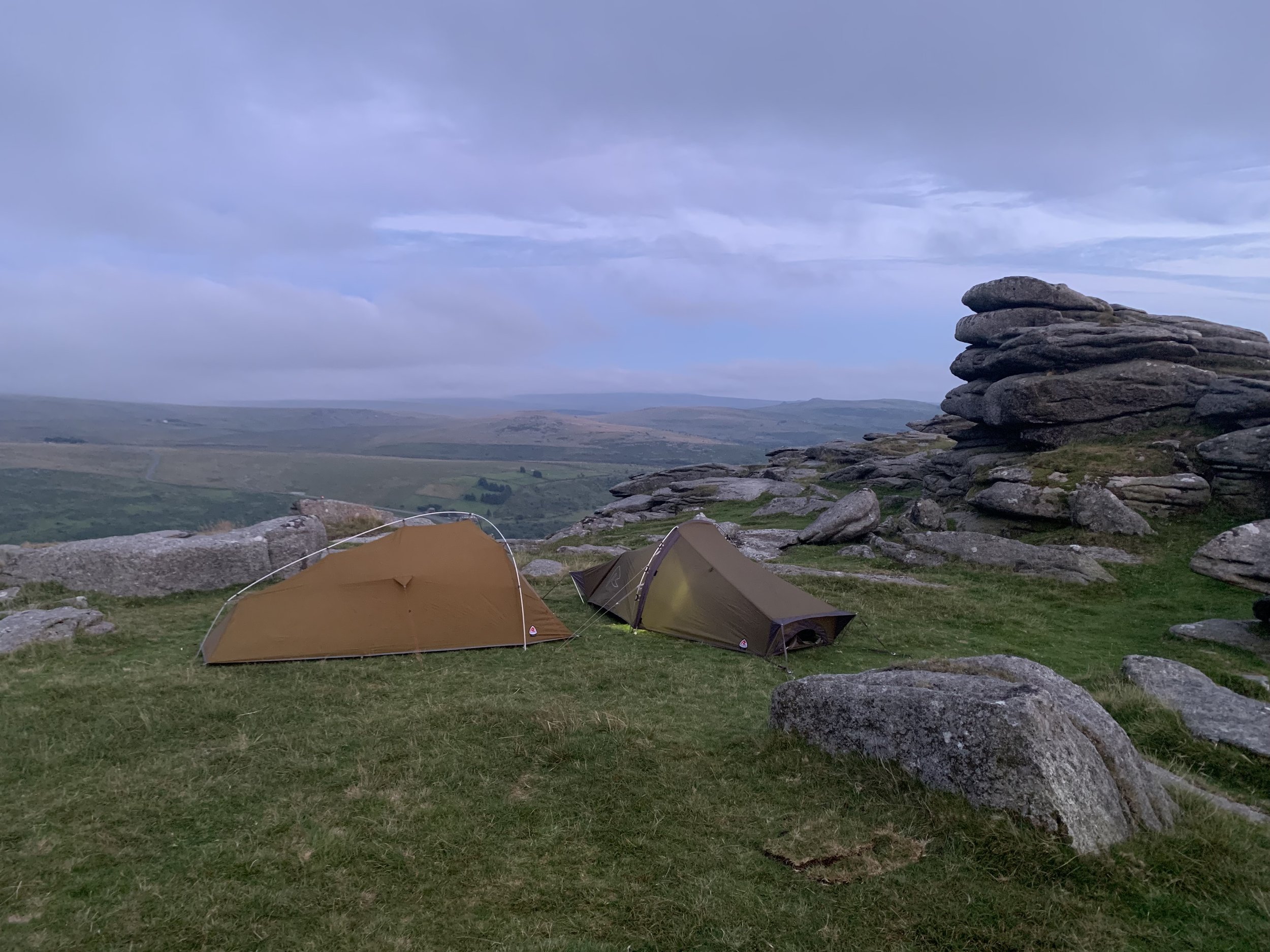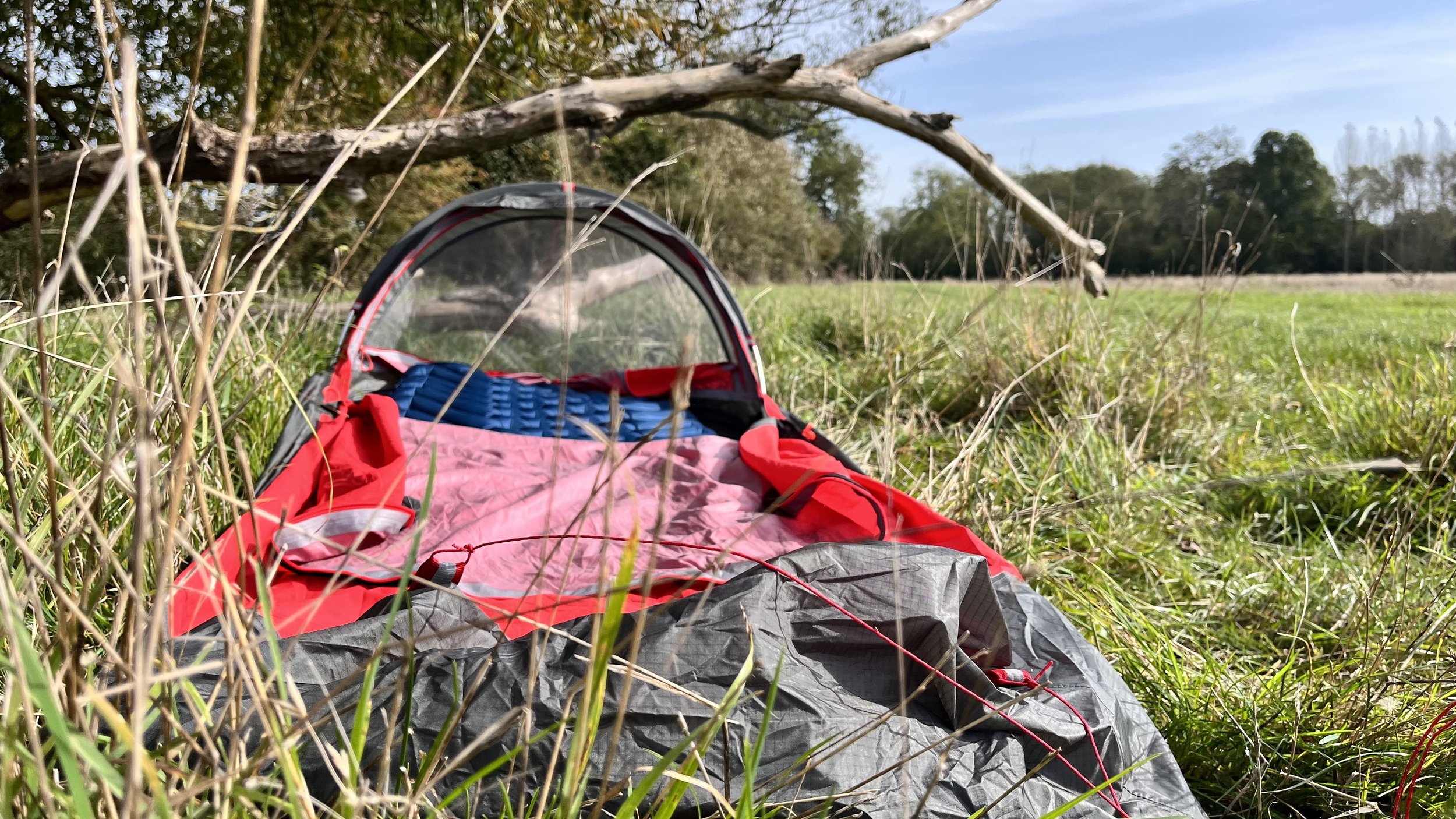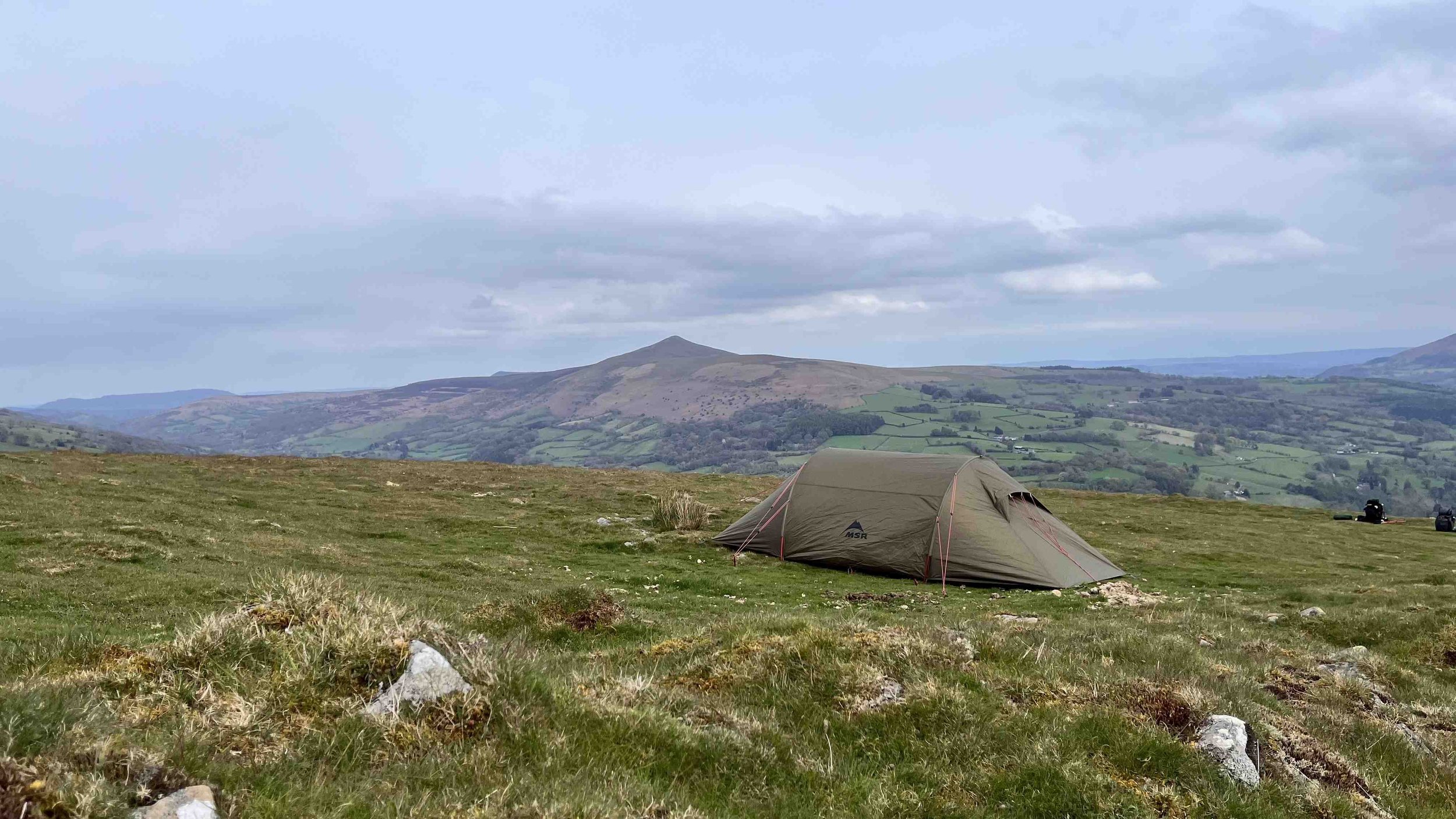Wild camping in the UK
Wondering how to start wild camping but not sure where to begin? You’re not alone — and you’re in the right place. This guide is packed with practical wild camping advice to help you plan your first night out with confidence. From choosing the right kit to finding legal places to pitch, we cover everything you need to know to make your first wild camp safe, simple, and enjoyable. Whether you’re heading to Dartmoor, Scotland or somewhere closer to home, this is your go-to guide for starting your wild camping journey the right way.
There’s nothing quite like your first night spent wild camping. The smell of grass in the dark, the silence you didn’t know existed, the morning light creeping through the tent walls. But before you get there, you’ve got one big hurdle to clear: the first time.
And here’s the truth — your first wild camp doesn’t need to be hardcore. It doesn’t need to be remote. It doesn’t need to happen in the rain. What it does need to be is safe, simple and comfortable enough that you’ll want to do it again.
So here’s your GBAC-approved checklist for a good, solid first outing — based on real experience, real gear, and a healthy respect for the Great British weather.
Don’t stray too far from the car
Don’t try to conquer the entire Cairngorms on your first go. You’re not proving anything to anyone. There’s no badge for choosing the most remote pitch possible and then having a rotten night. Wild camping is as much about building confidence as it is about building character. So here’s the move: pick a pitch that’s close to your car or just a short walk in. It could be a gentle path from a layby in the Lakes, or a spot within a couple of kilometres from a trailhead in Dartmoor. Somewhere you can test your kit, get a feel for the flow of an overnighter, and retreat easily if something’s not right.
Be a fair weather camper
There’s no shame in waiting for good weather for your first wild camp—in fact, it’s one of the smartest moves you can make. Wild camping is challenging enough without the added misery of horizontal rain or gale-force winds battering your tent all night. For your first time out, pick a clear forecast and give yourself the best shot at enjoying it. Comfort builds confidence, and confidence will take you much further in the long run.
Before you head out, check proper weather services like the Met Office or the Mountain Weather Information Service. If the forecast looks grim, believe it—in the hills, bad weather is often worse than it sounds. Driving rain, strong winds, and poor visibility can all turn a simple overnight trip into a miserable slog. If things look dicey, there’s no shame in postponing. The hills aren’t going anywhere, and you’ll have a much better time if you start your wild camping journey with a little bit of sunshine on your side.
Prioritise a good sleeping pad
Most first-time campers obsess over sleeping bags. It’s easy to get swept up in talk of down fill power and sub-zero ratings. But one of the best tips for first wildcamp experiences is this: focus on comfort underneath you, not just over you. On a cold British night, it’s the ground that steals your heat fastest — not the air. Without proper insulation underneath you, even the best sleeping bag in the world won’t stop that chill seeping into your bones.
A good sleeping pad — thick, insulated, and rated for the season you’re camping in — makes all the difference between tossing and turning all night and waking up warm and rested. Look for a pad with a decent R-value (we’d suggest anything of around 4+ for dependable three-season use in the UK), and don’t skimp on weight at the expense of comfort. Inflatable models with clever baffling or lightweight foam pads are both excellent options depending on how minimalist you want to go.
Set up before dark
Pitching a tent in the dark with cold fingers, a flapping rainfly, and a jittery headtorch beam is the worst. Even seasoned wild campers hate it — and it’s no way to start your first night out. Aim to reach your chosen spot with at least an hour of daylight left. It gives you time to find level ground, check for lumps and puddles, and get your shelter sorted properly while you can still see what you’re doing. Plus, if your chosen pitch isn’t quite right, you’ll have a daylight buffer to move on without stress.
Setting up early isn’t just about comfort — it’s about mindset. When the tent’s pitched and the gear’s stowed before sunset, you can sit back with a brew, watch the sky change colour, and ease yourself into the night ahead, rather than battling tangled guylines by torchlight. It sets the rhythm for the whole experience, and it makes everything feel that much more manageable and rewarding.
Sandwiches are an acceptable camp meal
You don’t have to be Ray Mears out there. Sure, hot food is nice — but for your first wild camp, there’s absolutely no need to lug a stove and faff about with half-cooked pasta or dried meals that taste like warm cardboard. You’ll already have enough on your plate figuring out your pitch, sorting your sleep system, and just getting used to the stillness. So keep your food as simple as possible.
Honestly? A Tesco meal deal will do just fine. A decent sandwich, a chocolate bar, a bottle of water or a flask of tea — anything that’ll keep your belly full and your energy topped up. Add in a few snacks like nuts or cereal bars and you’re good to go. There’s always time to try your hand at backcountry cooking later on. For now, focus on staying warm, staying fed, and keeping things easy.
Be disciplined with your waterproofs
As soon as it starts to rain — get your waterproofs on. Don’t wait, don’t debate, don’t “see how it goes.” By the time you feel properly wet, it’s already too late to fix it. Staying dry isn’t just about comfort — it’s about making everything else easier: pitching your tent, keeping your kit dry, staying warm through the night. Always keep your waterproof jacket somewhere accessible (not buried at the bottom of your pack) and act at the first spit of rain.
This is one of those lessons we picked up from GBAC members who’ve spent time in the forces: stay on top of your waterproof ‘admin’. In the army, if you got wet unnecessarily, you weren’t just uncomfortable—you were slower, colder, more vulnerable. Same goes out here. Stick to the golden rule: pack down dry, pitch up dry. If you respect that rhythm, your whole camp will run smoother, no matter what the British weather throws your way.
Avoid exposed, windy pitches
Wind is the ultimate vibe killer. It saps your warmth, rattles your nerves, and turns even the best-planned wild camp into a long, sleepless endurance test. Even if a spot has jaw-dropping views, don’t pitch there if it’s exposed. Find a hollow, tuck in behind a dry-stone wall, nestle into a dip in the landscape, or seek the lee side of a clump of trees. Shelter is always better than aesthetics—and no sunset is worth being battered awake all night.
And don’t fall into the trap of thinking your kit will save you. Even the best 4-season tents can get ripped apart in a gale, because physics is physics. If a 60mph wind decides to roll through your camp at 3am, no amount of Dyneema fabric or carbon poles will make it a good night. Pitch smart, pick protection over panorama, and you’ll sleep warmer, safer, and far, far happier.
Your headtorch is all the lantern you need
Don’t bother bringing an extra lantern. It might seem like a small thing, but when you’re solo camping—and especially when you’re trying to keep pack weight down—every item matters. Instead, just clip your headtorch to the ceiling loop of your tent and angle it at the roof. The light will bounce and scatter, creating a soft, ambient glow that’s perfect for sorting gear, reading a map, or brewing a late-night cuppa.
It’s a tiny detail, but it’s one less thing to buy, one less thing to pack, and one less thing to worry about charging. In lightweight wild camping, the real gains come from a hundred smart little choices like this — and this one’s too easy not to take advantage of.
Entertainment is allowed
You’ll be in that tent for a while. Sure, listening to the wind through the trees or the patter of rain on the flysheet can be lovely—but let’s be honest, it can also get a bit boring, especially if you’re solo and sleep isn’t coming easy. And that’s perfectly fine. Wild camping doesn’t have to be some kind of monk-like silence retreat.
Download an audiobook, a few podcast episodes, or even a Netflix series before you leave. Three hours of downloaded entertainment can be great company when the night stretches longer than expected. And don’t forget to pack earphones or AirPods—you’ll hear everything more clearly and avoid broadcasting your midnight murder mystery podcast to any nearby wildlife (or fellow campers, if you’re not alone). Getting bored isn’t brave—it’s avoidable. There’s no shame in winding down your wild day with a familiar voice or story.
Bring a proper pillow
Stuffing your jumper into a drybag works, but let’s be honest — it’s never quite as nice as the real thing. There are loads of lightweight backpacking pillows out there these days that pack down small and weigh very little. Or, if you’ve got the space, just bring a small pillow off your bed. Simple.
A pillow is a pillow, and very few people sleep well without one. So why sacrifice comfort for the sake of saving a couple of hundred grams? You’re already doing something adventurous — no need to make it harder than it needs to be. Give your neck a break. Take the pillow.
Stick to legal(-ish) land
Wild camping in the UK comes with a bit of a legal grey area. Outside of Scotland and parts of Dartmoor, it’s technically not legal to camp without landowner permission—but in practice, discreet and respectful wild camping has been quietly tolerated in the hills for decades. That said, if it’s your first time, avoid the stress of stealthy or uncertain pitches and make life easy for yourself.
Aim for:
Scotland, where wild camping is fully legal under the Scottish Outdoor Access Code.
Dartmoor, where camping is permitted in designated areas shown on the official park map.
Access land in England and Wales, where—despite being technically off-limits—quiet, no-trace camping is often tolerated in remote spots.
Use an OS Map or mapping app to find public land, rights of way, and open country. Avoid farmland, private woodland, and anywhere near buildings or roads. And above all else, follow the golden rule: leave no trace. Make sure no one knows you were there—and that the land is just as wild for the next person who passes through.
Still not sure about where to go for your first wild camp?
Check out this article for a full breakdown on land access and advice on where to go for your first night under the stars.
Or, come camping with us
Join our guided wild camping adventures across the UK — the perfect way to try your first wild camp, pick up new skills, and try top gear included as standard. Ready for your next big adventure?
We’ll see you out there
Wild camping isn’t about suffering. It’s about simplifying. About stripping things back and spending a night outside — just you, the stars, and the quiet reminder that you’re part of something far bigger than your inbox.
Get the basics right, keep things easy, and build up from there. Because one good night — dry, warm, and a little bit magical — is all it takes to start a lifelong love affair with the wild. This might be the beginning of something brilliant.
Share your experiences with us!
And when you get out there, let us know how it goes. We’d genuinely love to hear about your first solo overnighter, your kit setup, or the view from your tent porch. Tag us on Instagram @greatbritishadventureclub to share your wild camping story — we’re always excited to see where you end up.
Come camping with us
Join our guided wild camping adventures across the UK — the perfect way to try your first wild camp, pick up new skills, and try top gear included as standard. Ready for your next big adventure?















